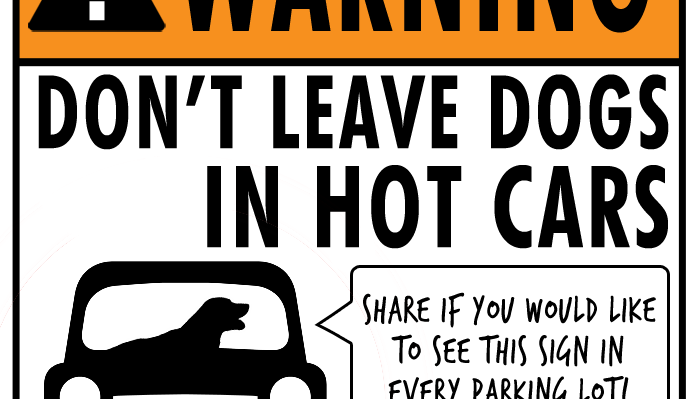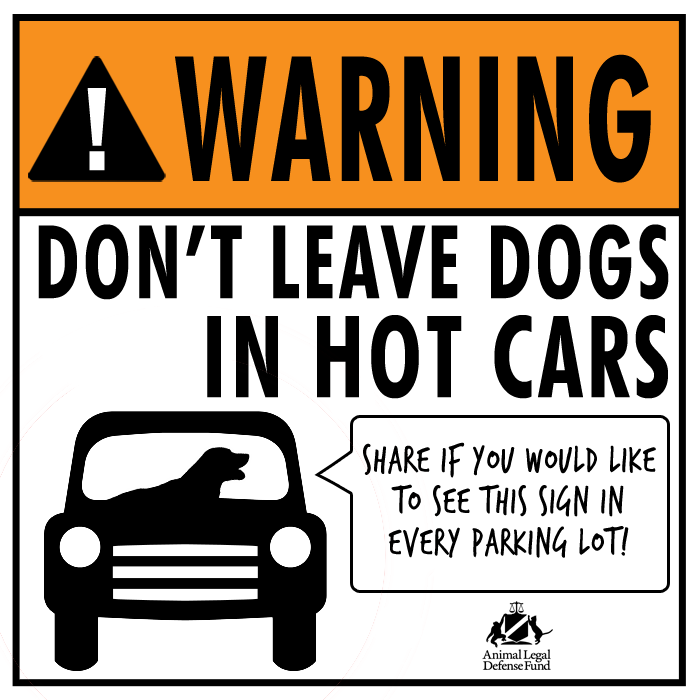
You know better. You would never leave your dog (or cat, or any pet) to suffer in a hot car. You know that when the temperature outside the car is only 72 degrees Fahrenheit, the temperature inside your car can heat up to 166 degrees within an hour. You know that, when it’s 80 degrees outside, the temperature inside your car can reach 99 degrees within ten minutes. You know that leaving your windows rolled down actually has little effect on the temperature inside your car.
You wouldn’t do it.
But many do, and dogs suffer for it.
What can you do when you see a dog suffering in a hot car?
First, a tip, for the sake of the dog: don’t approach the vehicle closely to peer inside. Many dogs are protective of their owners’ vehicles, and many more are likely to become agitated and start barking each time an unknown person comes within a certain distance of their vehicle. That’s normal and must be expected.
Since you don’t know how the dog or dogs involved will act, stay back and observe from a distance. If the animal is suffering, agitating it will only make the health risks worse, causing a much more serious outcome. When a dog is agitated, it’s also much more difficult to determine whether or not the dog is suffering. The agitation itself can cause the dog to pant and drool, behaviors that can be mistaken for overheating even if the dog is stressed only by your proximity.
From a distance:
- Write down the vehicle’s make, model, color, and license plate number.
- Take a photo with your phone or digital camera of the vehicle and where it’s parked.
- Ask the managers of nearby businesses to make announcements to locate the vehicle’s owner.
- If the owner of the vehicle cannot be located, call local animal control or the non-emergency number of local police and inform them.
- Wait nearby for animal control or local law enforcement to arrive.

Your best chance of helping an overheated animal is to be prepared for that situation ahead of time.
Some states have recently enacted legislation that absolves a rescuer from liability for breaking into a car to save a suffering animal inside it. Research your local laws or ask your local animal control agency what laws exist in your community. Unless you know for sure that you are indemnified, it’s not wise to break into a car yourself. In most cases, leave that to law enforcement.
Should you decide you’re safe to do it under your local laws—or should you decide you’re willing to break into the car even if you’re not indemnified—please first consider what you will do once you’ve got the windows broken. Taking the animal out of the hot vehicle and putting it into a cooler place is often not enough. You need to transport the animal immediately to the closest veterinarian for treatment. If the owner cannot be located, you will probably be expected to take responsibility not only for your act of breaking into the car, but also for the cost of the animal’s care.
Researching your local laws and keeping a list of local emergency numbers, veterinarians, and animal control agencies is always wise. Keep phone numbers in your wallet or purse (with an extra copy in your vehicle), in addition to saving those numbers on your mobile phone.
Your research may reveal that your state or community does not indemnify rescuers who break into vehicles. That may be something you’ll want to act to change. Contact your local legislators, state and federal, and let them know why you don’t think your current local regulations are adequate.
You can also contact your local agencies—animal control and humane organizations—to let them know you’ll volunteer to spread the information about animals in hot cars. You may be able to help by distributing flyers and informational pamphlets to local businesses that then make them available to their customers. Education is key, and you can help by educating as many as possible!
Finally, a recommendation.
Aggressively confronting owners who have left their animals unattended in a hot car is usually counterproductive. Carry some of those informational pamphlets or flyers with you so that, if the owners return to the vehicle while you are waiting for help, you can tactfully inform them that help has been called and why.
Use your own best judgment. Some owners are not going to react positively to being called out on their irresponsible behavior. Instead, they will argue with you, try to save face, and generally make the experience even more stressful—not only for you but for the animals involved.
Be cool. You may be very mad, you may be extremely upset, but yelling at the owners won’t help the dog. Be safe.
Next week, I’ll discuss other hot-weather hazards your pets may encounter.



